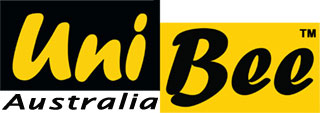Nissan Serena S-Hybrid vs ePower Comparison
Share
Nissan Serena S-Hybrid vs Nissan Serena ePower – 8-Seat vs 7-Seat Hybrid People Mover
If you’re searching for a Japanese hybrid people mover and torn between the Nissan Serena S-Hybrid (8-seater) and the Nissan Serena ePower (7-seater), this comparison guide will help Australian buyers decide. Though both share the convenient sliding-door MPV format and hybrid appeal, their seating layouts, hybrid systems and practical everyday use differ significantly.
2020 Nissan Serena e-Power Highway Star — 7-seat electric-motor drive people mover with quieter operation, stronger torque and premium hybrid efficiency.
Seating & interior layout
The S-Hybrid model offers a full 8-seat layout, ideal for larger families, extended trips or those needing maximum capacity. It features a third row bench that allows for three additional passengers without changing the family workflow.
By contrast, the ePower variant is configured as a 7-seater. Often the second row uses two large captain’s chairs, offering roomier comfort for rear passengers, or the third row can fold more easily for cargo. This setup is better suited to families of 5-6 who value flexibility and comfort over maximum seat count.
Hybrid technology & running costs
The Serena S-Hybrid uses a mild-hybrid system combined with a 2.0-litre petrol engine, offering good fuel efficiency and simplicity. It delivers reliable performance at lower cost of ownership. Meanwhile, the Serena ePower uses Nissan’s more advanced series-hybrid tech: the petrol engine works as a generator and the wheels are driven by an electric motor, giving smoother acceleration and excellent efficiency. In Australian driving, expect economy around 3.5-4.5 L/100 km for the ePower, versus around 6.0-6.8 L/100 km for the S-Hybrid.
e-Power hybrid system — the petrol engine acts only as a generator, while a full electric motor drives the wheels for smoother, quieter performance.

Nissan Serena S-Hybrid engine: The 2.0L petrol engine with mild-hybrid assistance offers smooth acceleration, low running costs and proven long-term reliability — ideal for families wanting simple, low-maintenance motoring.
Practicality for Australian buyers
Both models come with sliding doors, a flat floor and large cabin entry — perfect for school runs, road trips and everyday family use. The 8-seater S-Hybrid wins if you routinely carry 7-8 passengers or need third-row space. However, the 7-seater ePower sacrifices one seat for more room and comfort, which may be better for families that rarely fill all seats and want better third-row access or cargo space.
Import / ownership & servicing
When importing into Australia, both Serena S-Hybrid and ePower have strong support in the used-import market. However, parts and service for the ePower system might carry a slight premium due to its more complex hybrid architecture. The S-Hybrid system is simpler and may incur lower long-term servicing costs. We handle compliance, servicing and imports for both models to ensure they are ready for Australian roads.
Which model is best for you?
- Nissan Serena S-Hybrid (8-seat) – Best for families regularly carrying 7-8 passengers, larger families, or groups.
- Nissan Serena ePower (7-seat) – Better for families valuing comfort, premium hybrid tech, and those who rarely fill all 8 seats.
Browse our full range of Hybrid People Movers to see current stock and pricing.
Frequently Asked Questions
Is the ePower version more fuel efficient?
Yes. The ePower version offers smoother hybrid operation and slightly better economy in everyday driving.
Do we lose cargo space with the 7-seat layout?
Not necessarily. The 7-seat ePower often offers more flexible folding and better third-row access which can improve practical luggage space.
Which has lower ownership cost?
The S-Hybrid has the simpler system and may have slightly lower maintenance cost, but the difference is modest.
